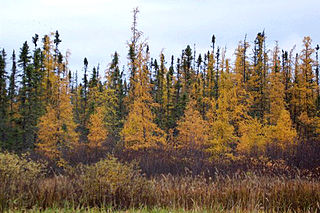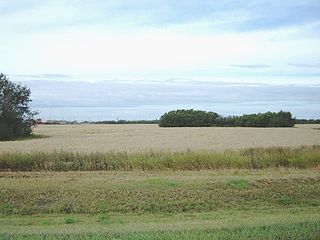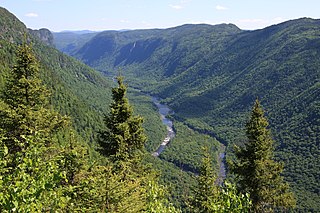| Geocaulon | |
|---|---|
 | |
| Scientific classification | |
| Kingdom: | Plantae |
| Clade: | Angiosperms |
| Clade: | Eudicots |
| Order: | Santalales |
| Family: | Santalaceae |
| Genus: | Geocaulon Fernald |
| Species: | G. lividum |
| Binomial name | |
| Geocaulon lividum (Richardson) Fernald | |
Geocaulon is a monotypic genus of flowering plants in the family Santalaceae containing the single species Geocaulon lividum, which is known by the common names northern comandra and false toadflax. It is native to northern North America, where it is common and widespread from Alaska to Newfoundland and into the northernmost contiguous United States. [1] [2]
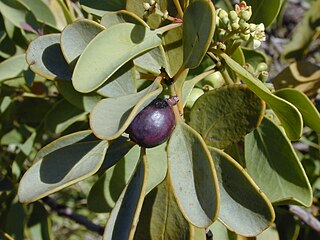
The Santalaceae, sandalwoods, are a widely distributed family of flowering plants which, like other members of Santalales, are partially parasitic on other plants. Its flowers are bisexual or, by abortion, unisexual. Modern treatments of the Santalaceae include the family Viscaceae (mistletoes), previously considered distinct.

Alaska is a U.S. state in the northwest extremity of North America, just across the Bering Strait from Asia. The Canadian province of British Columbia and territory of Yukon border the state to the east and southeast. Its most extreme western part is Attu Island, and it has a maritime border with Russia to the west across the Bering Strait. To the north are the Chukchi and Beaufort seas—southern parts of the Arctic Ocean. The Pacific Ocean lies to the south and southwest. It is the largest U.S. state by area and the seventh largest subnational division in the world. In addition, it is the 3rd least populous and the most sparsely populated of the 50 United States; nevertheless, it is by far the most populous territory located mostly north of the 60th parallel in North America: its population—estimated at 738,432 by the United States Census Bureau in 2015— is more than quadruple the combined populations of Northern Canada and Greenland. Approximately half of Alaska's residents live within the Anchorage metropolitan area. Alaska's economy is dominated by the fishing, natural gas, and oil industries, resources which it has in abundance. Military bases and tourism are also a significant part of the economy.
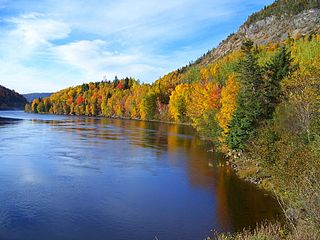
Newfoundland is a large Canadian island off the east coast of the North American mainland, and the most populous part of the Canadian province of Newfoundland and Labrador. It has 29 percent of the province's land area. The island is separated from the Labrador Peninsula by the Strait of Belle Isle and from Cape Breton Island by the Cabot Strait. It blocks the mouth of the Saint Lawrence River, creating the Gulf of Saint Lawrence, the world's largest estuary. Newfoundland's nearest neighbour is the French overseas community of Saint-Pierre and Miquelon.
This plant is a perennial herb which grows from rhizomes located in the humus. It produces stems up to 30 centimetres (12 inches) tall and inflorescences with two or three greenish or purplish flowers, one of which is generally perfect while the others are male. The fruit is an orange drupe containing one seed. [2] This plant grows as a hemiparasite on other species. It produces haustoria which tap the roots of host plants such as spruce, pine, birch, willow, alder, and twinflower. [2]

In botany and dendrology, a rhizome is a modified subterranean plant stem that sends out roots and shoots from its nodes. Rhizomes are also called creeping rootstalks or just rootstalks. Rhizomes develop from axillary buds and grow horizontally. The rhizome also retains the ability to allow new shoots to grow upwards.
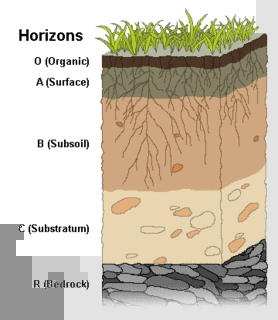
In soil science, humus denominates the fraction of soil organic matter that is amorphous and without the "cellular cake structure characteristic of plants, micro-organisms or animals." Humus significantly affects the bulk density of soil and contributes to its retention of moisture and nutrients.

An inflorescence is a group or cluster of flowers arranged on a stem that is composed of a main branch or a complicated arrangement of branches. Morphologically, it is the modified part of the shoot of seed plants where flowers are formed. The modifications can involve the length and the nature of the internodes and the phyllotaxis, as well as variations in the proportions, compressions, swellings, adnations, connations and reduction of main and secondary axes. Inflorescence can also be defined as the reproductive portion of a plant that bears a cluster of flowers in a specific pattern.
This plant grows in many types of moist boreal habitat. It occurs in many types of coniferous and deciduous forests, bogs, and other wetlands. It is found in spruce forests on the taiga of Alaska and it is an indicator of continental boreal and cool temperate climate in British Columbia. It is found alongside plant species such as American green alder (Alnus viridis ssp. crispa), bog Labrador tea (Ledum groenlandicum), bearberry (Arctostaphylos uva-ursi), crowberry (Empetrum nigrum), twinflower (Linnaea borealis), prickly rose (Rosa acicularis), mountain cranberry (Vaccinium vitis-idaea), bog blueberry (Vaccinium uliginosum), highbush cranberry (Viburnum edule), bunchberry (Cornus canadensis), one-sided wintergreen (Orthilia secunda), bluejoint reedgrass (Calamagrostis canadensis), horsetails (Equisetum spp.), feathermosses (Hylocomium splendens and Pleurozium schreberi), and lichens (Cladonia spp. and Peltigera aphthosa). [2]

Temperate deciduous or temperate broad-leaf forests are a variety of temperate forest dominated by trees that lose their leaves each year. They are found in areas with warm moist summers and cool winters. The six major areas of this forest type occur in the Northern Hemisphere: North America, East Asia, Central and Western Europe, Denmark, southern Sweden and southern Norway. Smaller areas occur in Australasia and southern South America. Examples of typical trees in the Northern Hemisphere's deciduous forests include oak, maple, beech and elm, while in the Southern Hemisphere, trees of the genus Nothofagus dominate this type of forest. The diversity of tree species is higher in regions where the winter is milder, and also in mountainous regions that provide an array of soil types and microclimates. The largest intact temperate deciduous forest in the world is protected inside of the six-million-acre Adirondack Park in Upstate New York in the United States.

A bog or bogland is a wetland that accumulates peat, a deposit of dead plant material—often mosses, and in a majority of cases, sphagnum moss. It is one of the four main types of wetlands. Other names for bogs include mire, quagmire, and muskeg; alkaline mires are called fens. They are frequently covered in ericaceous shrubs rooted in the sphagnum moss and peat. The gradual accumulation of decayed plant material in a bog functions as a carbon sink.
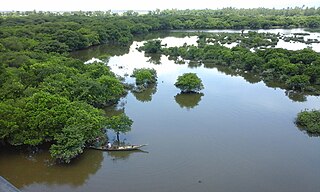
A wetland is a distinct ecosystem that is inundated by water, either permanently or seasonally, where oxygen-free processes prevail. The primary factor that distinguishes wetlands from other land forms or water bodies is the characteristic vegetation of aquatic plants, adapted to the unique hydric soil. Wetlands play a number of functions, including water purification, water storage, processing of carbon and other nutrients, stabilization of shorelines, and support of plants and animals. Wetlands are also considered the most biologically diverse of all ecosystems, serving as home to a wide range of plant and animal life. Whether any individual wetland performs these functions, and the degree to which it performs them, depends on characteristics of that wetland and the lands and waters near it. Methods for rapidly assessing these functions, wetland ecological health, and general wetland condition have been developed in many regions and have contributed to wetland conservation partly by raising public awareness of the functions and the ecosystem services some wetlands provide.



